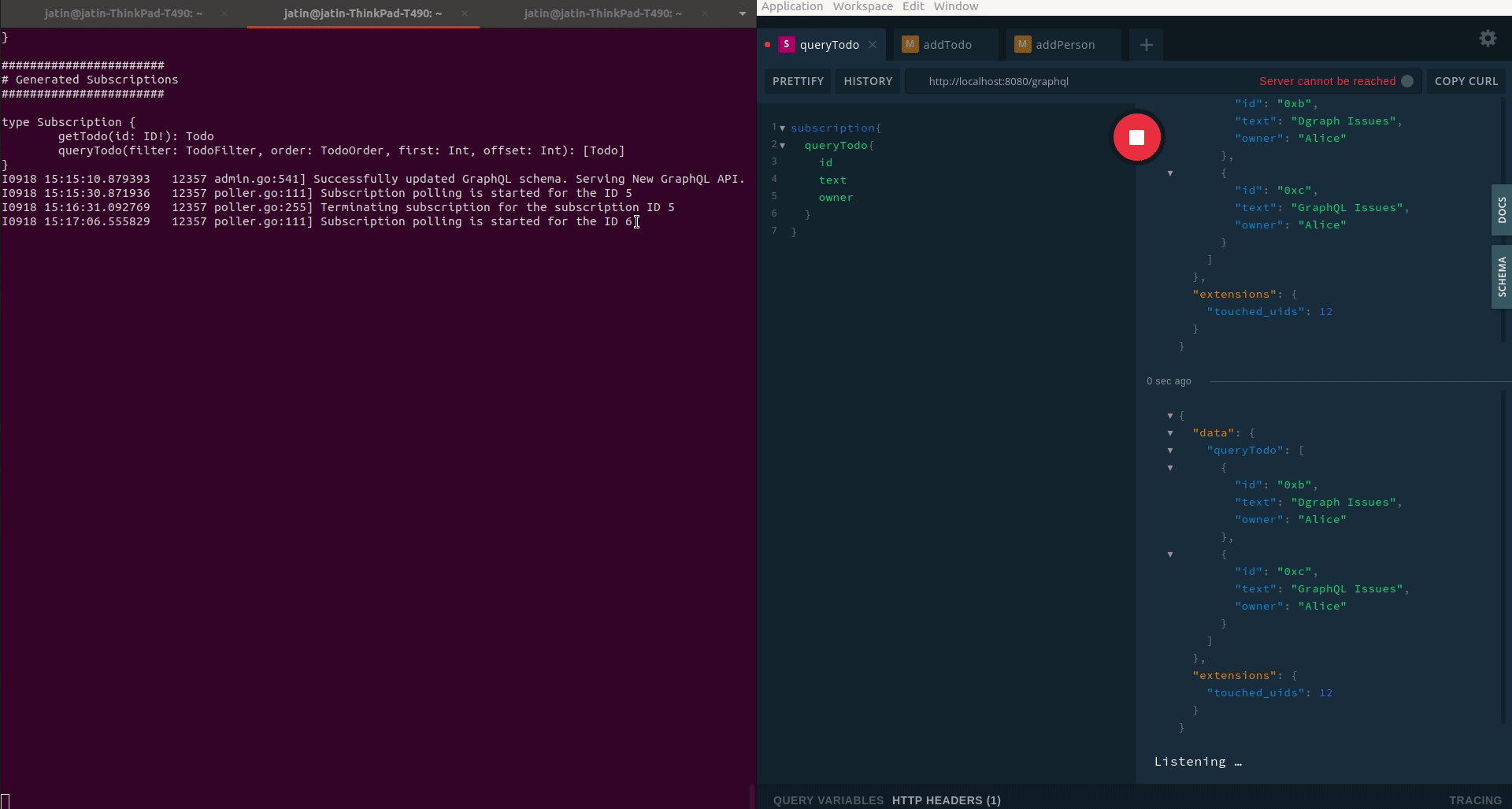GraphQL Subscriptions
Subscriptions allow clients to listen to real-time messages from the server. The client connects to the server with a bi-directional communication channel using the WebSocket protocol and sends a subscription query that specifies which event it is interested in. When an event is triggered, the server executes the stored GraphQL query, and the result is sent back to the client using the same communication channel.
The client can unsubscribe by sending a message to the server. The server can also unsubscribe at any time due to errors or timeouts. A significant difference between queries or mutations and subscriptions is that subscriptions are stateful and require maintaining the GraphQL document, variables, and context over the lifetime of the subscription.
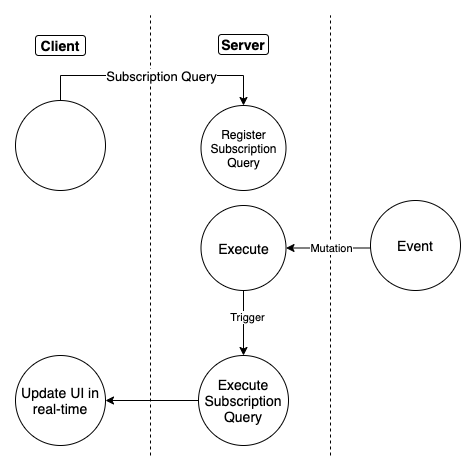
How to enable subscriptions in GraphQL
In GraphQL, it’s straightforward to enable subscriptions on any type. You can add the @withSubscription directive to the schema as part of the type definition, as in the following example:
type Todo @withSubscription {
id: ID!
title: String!
description: String!
completed: Boolean!
}
Example
After updating the schema with the @withSubscription directive, you can execute a subscription query and receive updates when the subscription query result is updated, as follows:
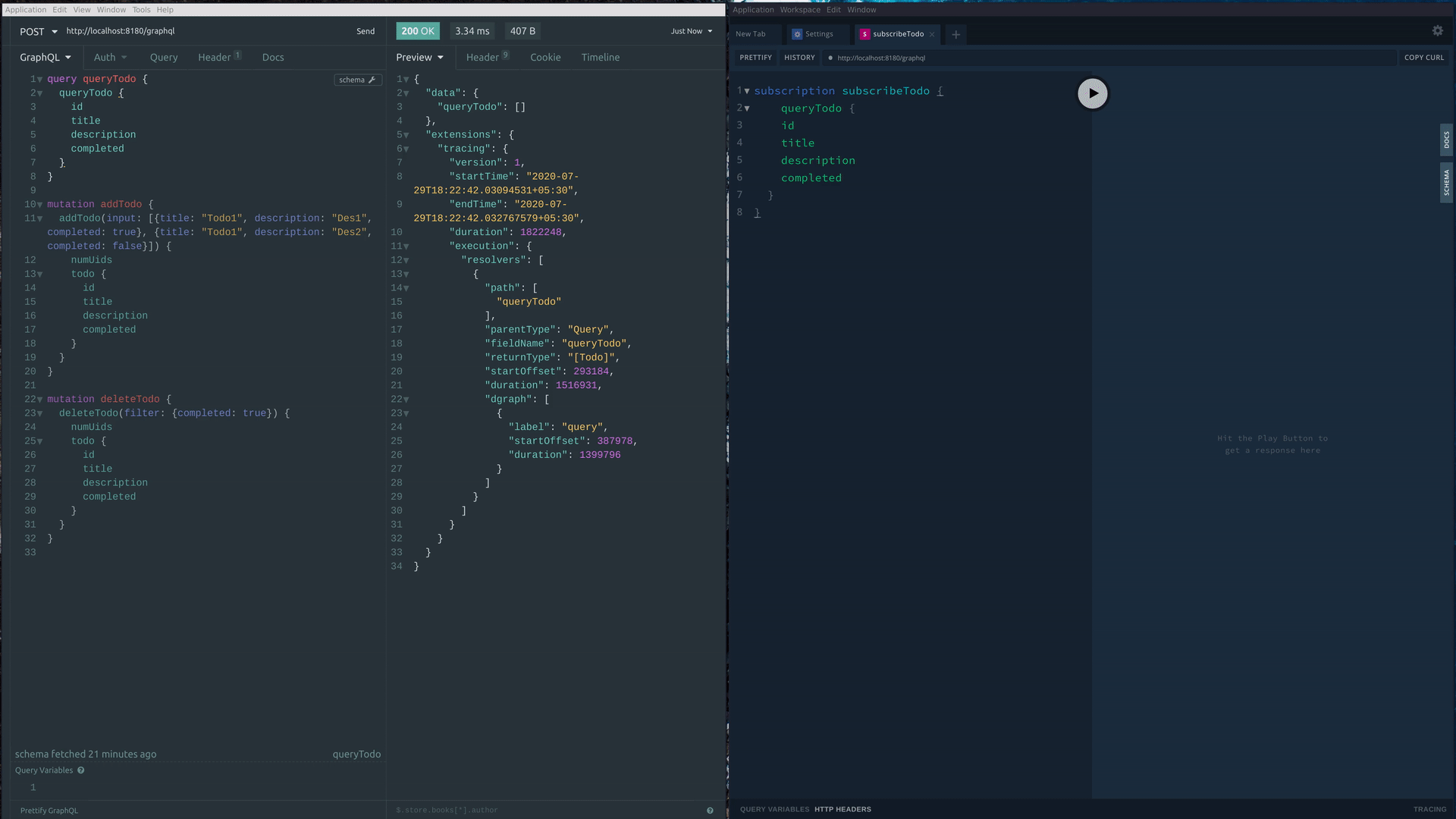
Apollo client setup
To learn about using subscriptions with Apollo client, see a blog post on GraphQL Subscriptions with Apollo client.
Subscriptions to custom DQL
You can use the @withSubscription directive on GraphQL types to generate subscription queries for that type.
You can also apply this directive to custom DQL queries by specifying @withSubscription on individual DQL queries in type Query,
and those queries will be added to type subscription.
For example, see the custom DQL query queryUserTweetCounts below:
type Query {
queryUserTweetCounts: [UserTweetCount] @withSubscription @custom(dql: """
query {
queryUserTweetCounts(func: type(User)) {
screen_name: User.screen_name
tweetCount: count(User.tweets)
}
}
""")
}
Because the queryUserTweetCounts query has a @withSubscription directive, it
will be added to the subscription type, allowing users to subscribe to this query.
Authorization with subscriptions
Authorization adds more power to GraphQL subscriptions. You can use all of the authorization features that are available when running queries. Additionally, you can specify when the subscription automatically terminates (the “timeout” of the subscription) in the JWT.
Schema
Consider following Schema that has both the @withSubscription and @auth directives defined on type Todo. The authorization rule enforces that only to-do tasks owned by $USER (defined in the JWT) are visible.
type Todo @withSubscription @auth(
query: { rule: """
query ($USER: String!) {
queryTodo(filter: { owner: { eq: $USER } } ) {
__typename
}
}"""
}
){
id: ID!
text: String! @search(by: [term])
owner: String! @search(by: [hash])
}
# Dgraph.Authorization {"VerificationKey":"secret","Header":"Authorization","Namespace":"https://dgraph.io","Algo":"HS256"}
JWT
The subscription requires a JWT that declares the $USER, expiry, and other variables.
The JWT is passed from the GraphQL client as key-value pair, where the key is the Header given in the schema and the value is the JWT.
In the example below, the key is Authorization and the value is the JWT.
Most GraphQL clients have a separate header section to pass Header-JWT key-value pairs. In the Apollo client, these are passed
using connectionParams, as follows.
const wsLink = new WebSocketLink({
uri: `wss://${ENDPOINT}`,
options: {
reconnect: true,
connectionParams: { "Authorization": "eyJhbGciOiJIUzI1NiIsInR5cCI6IkpXVCJ9.eyJleHAiOjE2OTAxMjg2MjIsImh0dHBzOi8vZGdyYXBoLmlvIjp7IlJPTEUiOiJVU0VSIiwiVVNFUiI6IkFsaWNlIn0sImlzcyI6InRlc3QifQ.6AODlumsk9kbnwZHwy08l40PeqEmBHqK4E_ozNjQpuI", },});
permessage-deflate compression if the GraphQL client’s
Sec-Websocket-Extensions request header includes permessage-deflate, as follows:
Sec-WebSocket-Extensions: permessage-deflate.
Example
The following example shows the operation of subscriptions with authentication rules for the schema given above.
First, you can generate the JWT as shown in the following image with expiry and $USER (the owner of a to-do task).
You can generate the JWT from jwt.io. The client should send the JWT to the server along with the request, as discussed above.
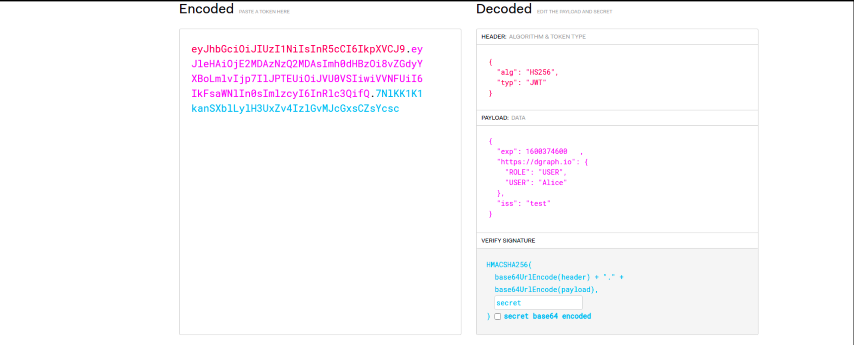
Next, Dgraph runs the subscription and send updates. You can see that only the to-do tasks that were added with the owner name “Alice” are visible in the subscription.
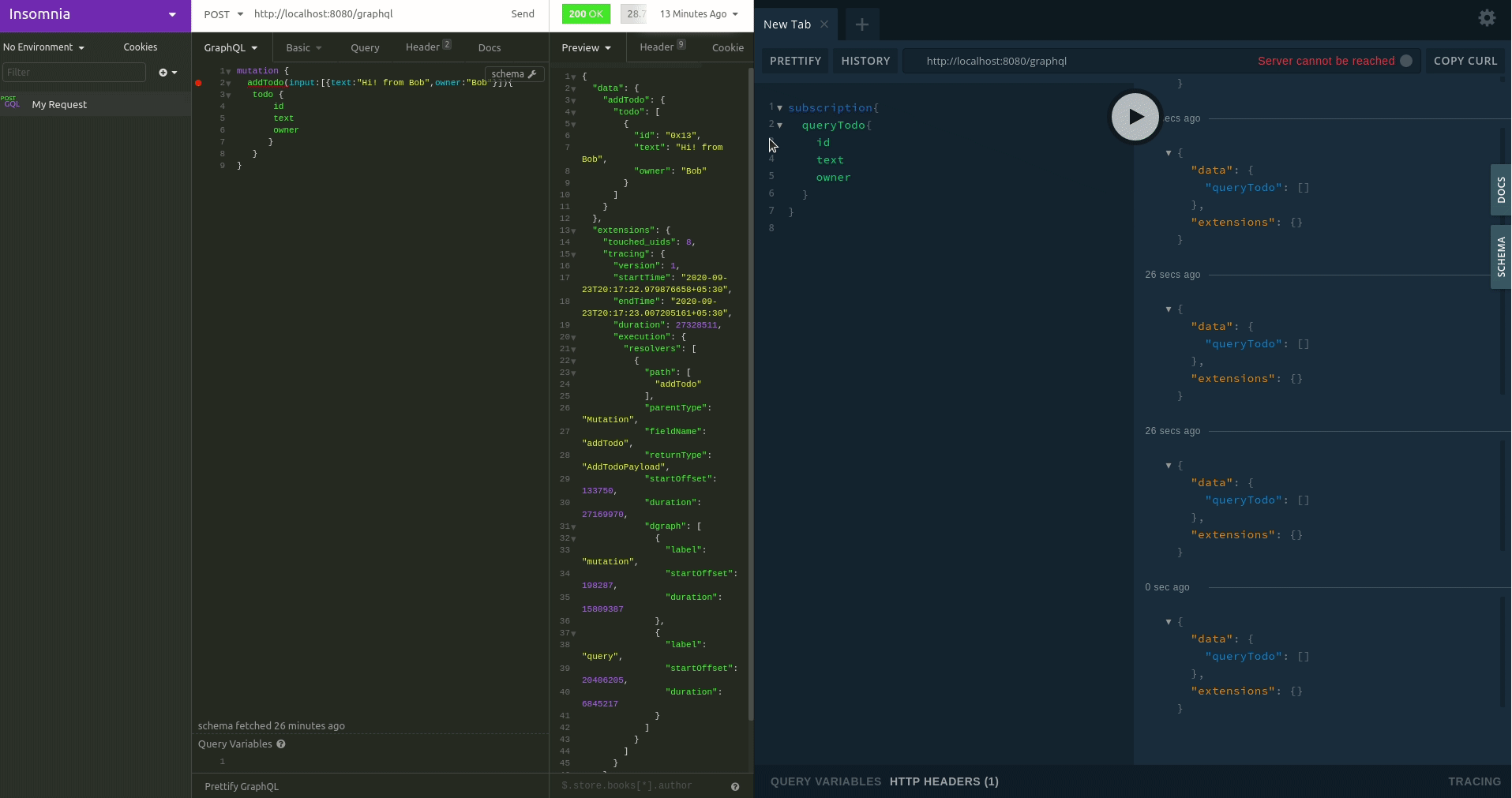
Eventually, the JWT expires and the subscription terminates, as shown below.
